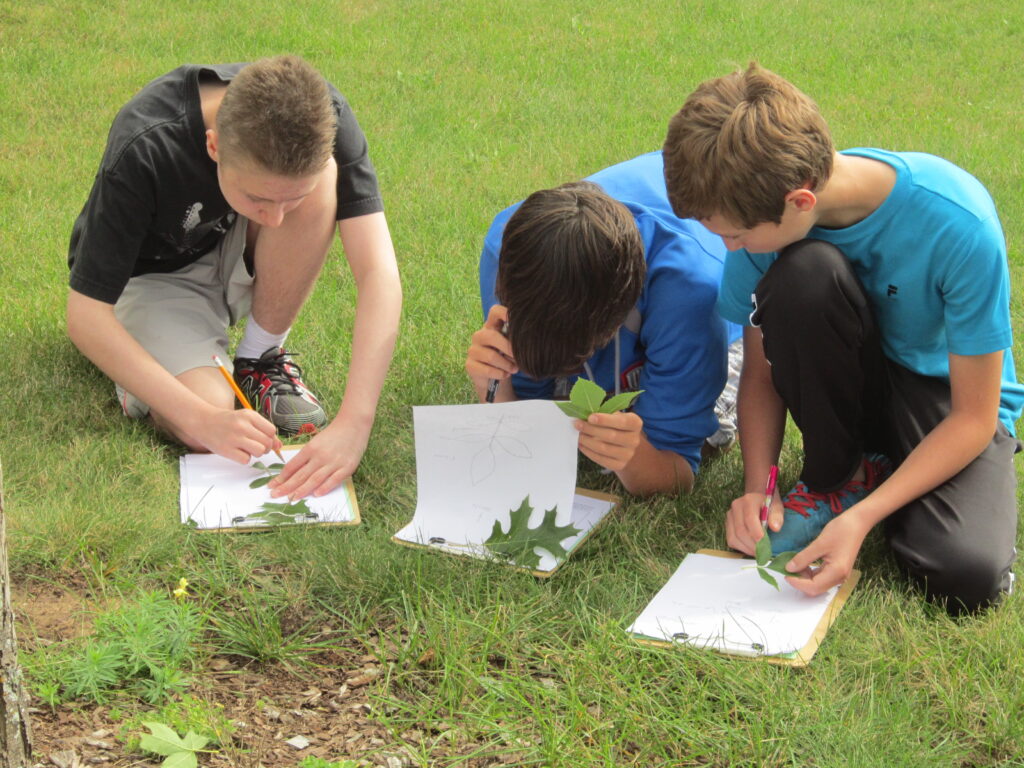By Jonathan Ismail, LEAF K-12 Forestry Education Program Outreach Specialist, Stevens Point jismail@uwsp.edu or 715-346-3229

Photo Credit: Jonathan Ismail, LEAF K-12 Forestry Education Program Outreach Specialist
Numerous research studies support the idea that green spaces and vibrant tree canopy at school campuses are important for students’ academic and socioemotional growth. But that can be easily overlooked during construction, design build and as our school grounds in our communities age over time. Municipal foresters and tree boards can be part of driving positive change.
Three critical preconditions for learning – ability to concentrate, intrinsic motivation and manageable levels of stress – have been linked to green schoolyards in recent research[1]. At the LEAF K-12 Forestry Education Program, a partnership between the DNR Division of Forestry and University of Wisconsin – Stevens Point, our resources can help you get students outdoors and connected with nature. For example, our Forest Mapping activity provides learners with hands-on outdoor mapping investigations of their school campus.
Learning in nature can even support improved peer relationships, reduced stress and reduced anger for children[2]. The LEAF Forestry Education Kit contains all the resources you need for in-depth investigation of schoolyard and urban forests, which can be a great partnership event for municipal foresters or tree boards. The kit is available for FREE checkout statewide or may be shipped from Stevens Point. Using the measurement and ID tools in this kit, students will develop a better connection with trees at their school and nearby neighborhood. Knowledge about local trees can spark children’s interest in planting more.
Tree planting events are one high-impact way to gain student, teacher, family and community buy-in. Encourage teachers to continue the learning in their classroom with LEAF’s Caring for the Forest Lesson. Students can be involved with ALL parts of tree planting events. In this activity, students research the right site, and the right tree, for planting at their school. Research supports that school greening, as measured by tree canopy, has the potential to improve academic underachievement in high-poverty urban schools.[3]
Our LEAF team is happy to assist schools looking for educational resources about urban forests and development of outdoor classrooms. Contact or refer others to us anytime: leaf@uwsp.edu, 715-346-4956, or visit our website at www.leafprogram.org.
[1] Kuo M, Browning MHEM, Sachdeva S, Lee K and Westphal L (2018). Might School Performance Grow on Trees? Examining the Link Between “Greenness” and Academic Achievement in Urban, High-Poverty Schools. Front. Psychol. 9:1669.
[2] “Nature Can Improve Health and Wellbeing” (infographic). Children and Nature Network: 2016. Online: https://eadn-wc04-796033.nxedge.io/wp-content/uploads/CNN20_BNHealth-and-Wellbeing_23-3-24.pdf
[3] Kuo M, Browning MHEM, Sachdeva S, Lee K and Westphal L (2018).
